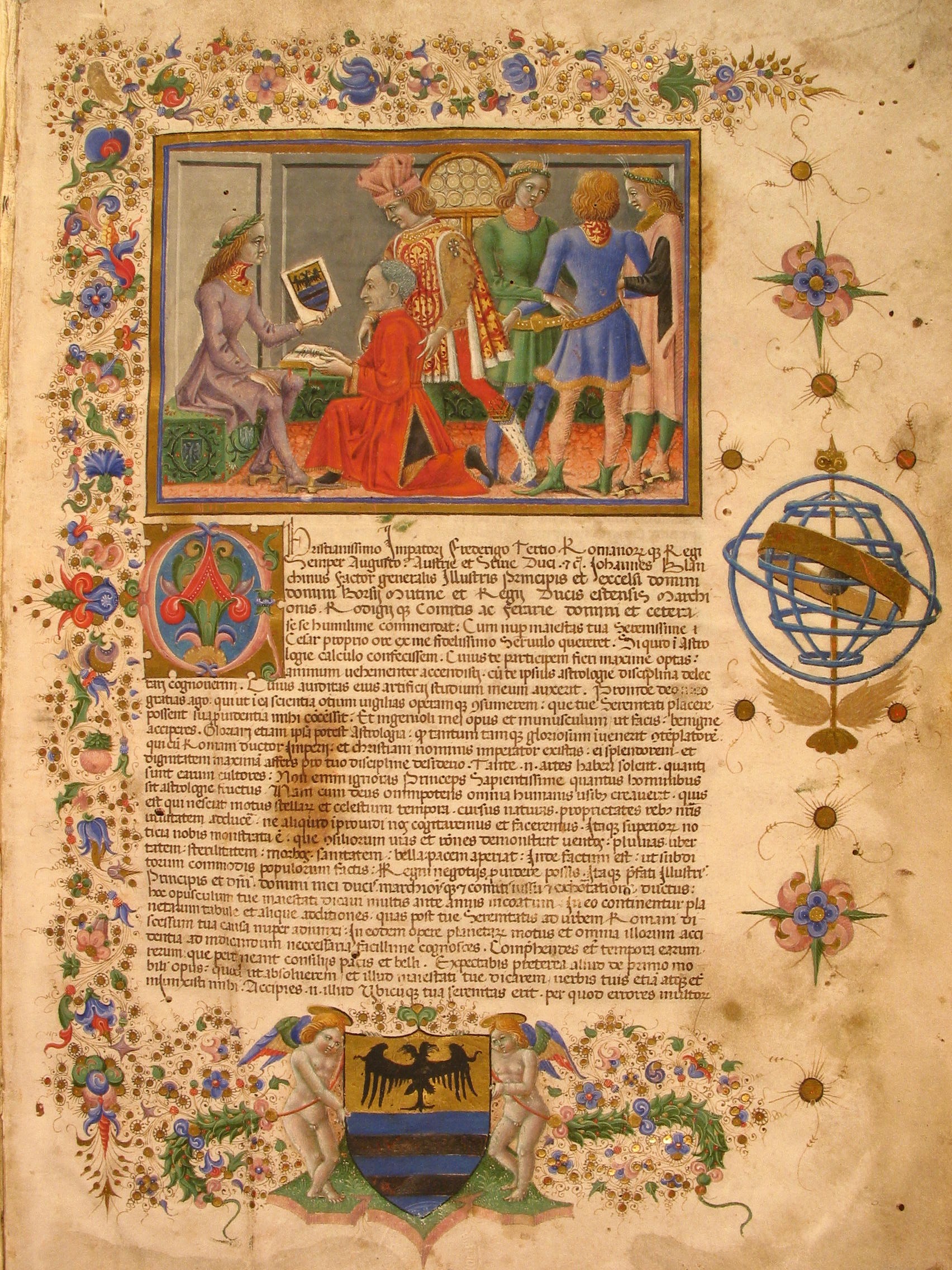The manuscript ‘Tabulae Astrologiae’ combines two great passions of the Este family, literature and astronomy, two themes based on the same desire for knowledge. Knowledge was a concept reserved for the nobility and was therefore considered a factor of prestige: the courts competed for the most authoritative tutors to grant the best education to their children, men of letters to compose verses and songs to glorify the dynasty, artists and musicians to recount their exploits. A Renaissance prince had to possess a studiolo or library, a symbol of virtue and an instrument of culture. Already Niccolò III (1383-1441) established the first nucleus of the library in the Castello Estense, which contained a large number of rare and valuable volumes, at a time when printing had only just appeared and transcribing a codex required not only a great deal of time but also knowledge of writing, a practice that was by no means taken for granted. Borso, who was not a fine man of letters, took care of the library and promoted a freer circulation of the precious books in both the court and the University of Ferrara.
The manuscript is a study of astronomy composed by Giovanni Bianchini, astronomer, mathematician and ducal administrator, which proposes a more modern study of the planetary system and contains detailed astronomical tables. The miniature work in the codex is instead attributed to Giorgio d’Alemagna. The copy conserved in the Biblioteca Medicea Laurenziana in Florence is dedicated to Leonello (1407-1450) and assumes that the manuscript was already composed before 1450, while the Ariostea copy was probably commissioned by Borso to Bianchini himself, as we shall see later. The work was a great success beyond the borders of Ferrara, and several copies were made.
The frontispiece is enriched with an extensive and accurate miniature depicting the moment in which Giovanni Bianchini, introduced by Borso d’Este, offers his treatise as a gift to Emperor Frederick III, an astronomy enthusiast, who in turn presents him with the coat-of-arms with the imperial eagle in recognition of the noble title to the Bianchini family. The figure of Borso, in the centre of the illustration, is depicted wearing a tall red hat and the usual brocade robes embellished with jewels, with a fascinating detail of the stocking decorated with the paraduro emblem. On the right are three court figures intent on a conversation; worth noting are the tapered, pointed shoes in the French taste in vogue at the time. The representation proposes explicit influences from the Borgognone and Provençal courts, from that courtly and knightly world from which the Lords of Ferrara were openly inspired. The page is framed by a frieze running on three sides with rich polychrome floral and plant motifs and gold buttons, while the side on the right is decorated with an armillary sphere symbolising the study of astronomy. The letterhead is a foliate ‘C’ on a blue background and gold frame.
The event described in the vignette at the opening of the treatise took place in 1452 when the Emperor, passing through Ferrara, conferred on Borso the ducal title over Modena and Reggio.
It is plausible that this copy was commissioned by Borso for Bianchini himself at the time of his dismissal from his position as Este official in 1457, as underlined by the absolution note of dismissal signed by Borso to Bianchini placed at the foot. Confirming this hypothesis, the Bianchini coat of arms is miniated in the foot of the first page, supported by a pair of refined putti with enchanting coloured wings; the family coat of arms is also found in the main miniature of the page in the hands of Emperor Frederick III. Following the hypothesis of the gift to Bianchini himself, it is understandable how the manuscript remained in Ferrara even after the Devolution of 1598: we find it in the 18th century in Cardinal Cornelio Bentivoglio’s library, inherited by Marquis Guido Bentivoglio and sold by him to the city’s administrative magistracy, which granted it to the Civic Library in 1750.







